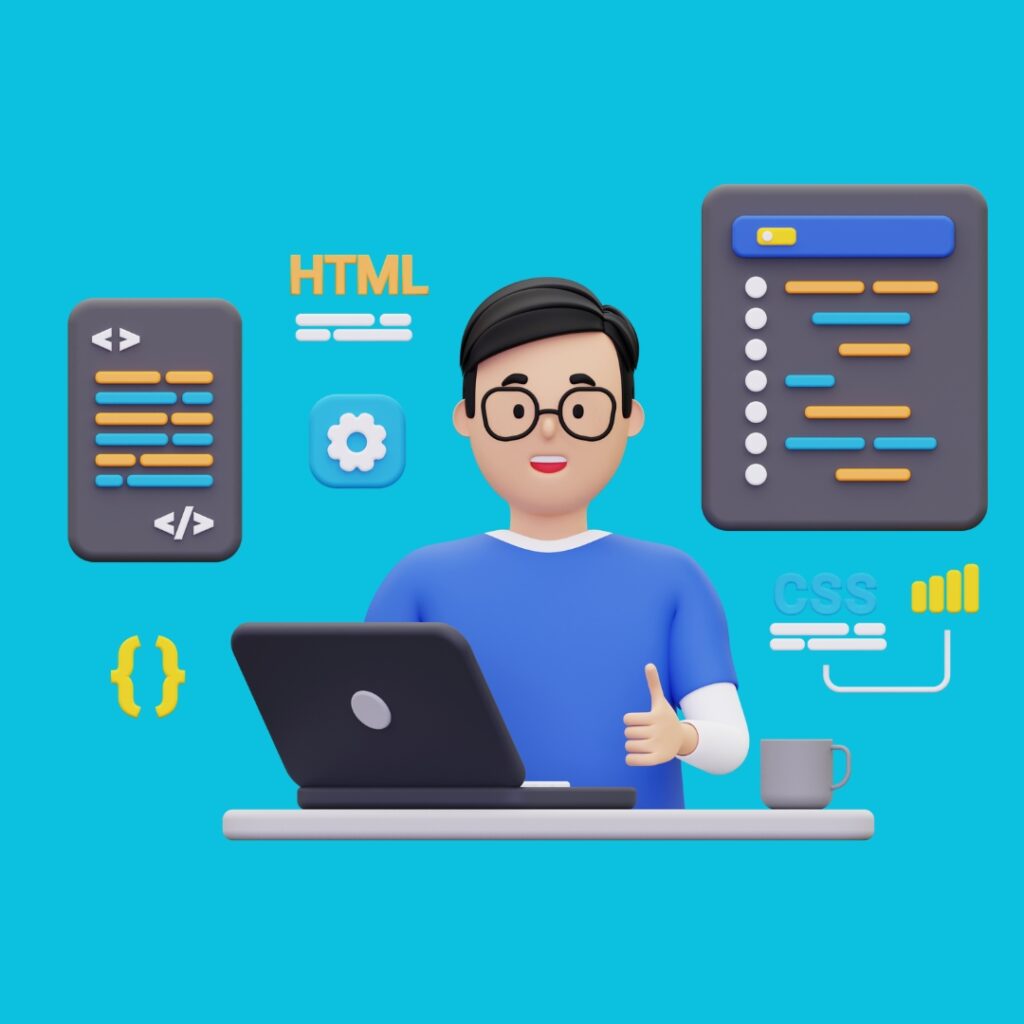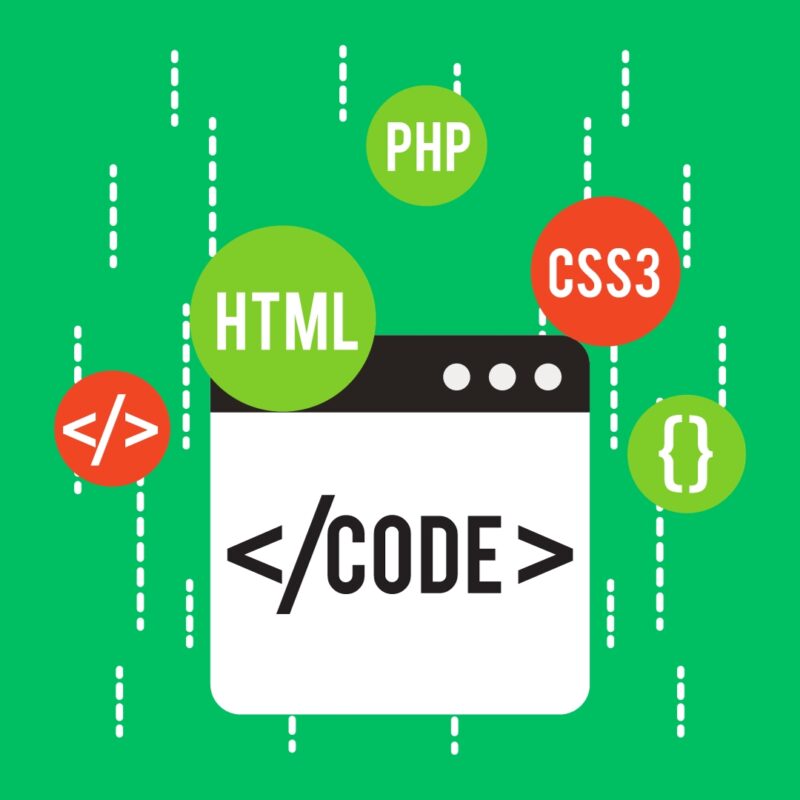Embarking on the journey of coding as a beginner can be both thrilling and challenging. In today’s digital era, gaining coding skills is like opening a door to countless possibilities. Additionally, this guide is designed to simplify coding, offering a step-by-step roadmap for beginners to navigate through programming basics smoothly. Furthermore, as we explore the fundamentals, we’ll unravel coding complexities, enabling you not only to comprehend but also to express yourself fluently in the language of technology. So, buckle up as we embark on this transformative journey, where every line of code is a stepping stone toward achieving digital fluency.

Understanding the Basics
Define Coding
In this foundational section, let’s unravel the concept of coding, commonly known as programming. Coding is essentially the art of instructing a computer to perform specific tasks by crafting sets of instructions using a programming language. This process involves translating human-readable logic into a format that computers can seamlessly execute. Coding stands as a fundamental skill in our current digital landscape, providing individuals with the empowerment to create software, develop websites, and efficiently solve complex problems.
Foundational Concepts
To start your coding journey, it’s essential to grasp the fundamental building blocks. This involves comprehending variables, acting as containers for storing data; data types, specifying the kind of data a variable can hold; and syntax, which constitutes the set of rules governing the structure of code. These foundational concepts serve as the cornerstone of programming, offering the essential framework for more advanced coding endeavors.
Practical Examples
Learning becomes more tangible through practical examples. In this section, we’ll delve into simple coding demonstrations to illustrate the concepts introduced earlier. These examples will serve as a hands-on approach to reinforce your understanding of variables, data types, and syntax. Through practical application, you’ll gain a deeper insight into how these coding elements function in real-world scenarios.

Choosing the Right Language
Importance of Language Selection:
Selecting the right programming language is akin to choosing the right tool for a job. In this section, we’ll explore the significance of language selection for beginners. Each programming language has its strengths, weaknesses, and areas of application. Understanding these factors will empower you to make informed decisions and set the stage for a more tailored and effective coding journey.
Recommendations:
To ease the entry into the coding realm, we recommend starting with beginner-friendly languages. Python, known for its readability and versatility, is an excellent choice for beginners. JavaScript, with its prominence in web development, is another language worth considering. These languages provide a gentle learning curve without compromising their applicability to a wide range of projects.
Applications:
Delving deeper, we’ll discuss the practical applications and versatility of each recommended language. Python’s readability makes it suitable for various applications, including web development, data analysis, and artificial intelligence. Although, JavaScript’s integration with web browsers positions it as a primary language for front-end web development. Understanding the applications of these languages will guide you in choosing the one that aligns with your coding goals.

Hands-On Practice
Practical Learning Platforms:
Transitioning from theory to practice is a pivotal step in your coding journey. In this section, we’ll introduce you to practical learning platforms that provide immersive hands-on experiences. Codecademy, LeetCode, and GitHub offer dynamic environments where you can actively engage with coding exercises, allowing you to apply theoretical knowledge in real-world scenarios.
Importance of Practice:
Highlighting the significance of consistent practice is essential. Practice is the cornerstone of skill development in coding. Regularly engaging with coding exercises not only reinforces your understanding but also hones your problem-solving abilities. The more you practice, the more confident and adept you become in navigating the intricacies of coding.
Interactive Coding Exercises:
Encourage active participation by emphasizing the importance of interactive coding exercises. These exercises not only test your comprehension but also foster a hands-on approach to learning. Actively engaging with code enhances your muscle memory and accelerates the learning process. Embrace these exercises as opportunities to refine your coding skills.
Problem-Solving Skills
Coding Challenges:
Developing problem-solving skills is integral to becoming a proficient coder. In this section, we’ll delve into the importance of tackling coding challenges and algorithmic problems. Coding challenges provide a platform to apply theoretical knowledge to real-world scenarios, fostering a mindset of analytical thinking and logical problem-solving.
Platforms for Challenges:
To actively hone your problem-solving skills, we recommend leveraging dedicated platforms like HackerRank and CodeSignal. These platforms offer a diverse range of challenges, from beginner to advanced levels, allowing you to progressively enhance your coding proficiency. Engaging with challenges on these platforms broadens your understanding and prepares you for real-world coding scenarios.
Logical Thinking:
Highlight the transformative effect of coding challenges on logical thinking. Through the process of solving problems, you’ll develop a structured approach to logical reasoning. The ability to break down complex problems into manageable components is a skill that transcends coding, proving valuable in various aspects of life and decision-making.
Learning Resources
Diverse Learning Materials:
Navigating the vast sea of information requires curated learning resources. In this section, we’ll recommend a variety of learning materials to cater to different learning styles. From online tutorials and books to video lectures, diversifying your learning sources ensures a comprehensive understanding of coding concepts.
Platform Suggestions:
Mention reputable online learning platforms such as Udacity, Coursera, and Khan Academy. These platforms offer structured courses led by industry experts, providing a guided learning experience. Choose platforms that align with your learning preferences and offer content suitable for beginners.
Tailored for Beginners:
Ensure that the recommended resources are beginner-friendly. The learning materials should be accessible and comprehensible to those taking their initial steps in coding. Look for resources that provide a solid foundation, gradually progressing in complexity as your skills evolve.
Build Projects
Application of Knowledge:
The transition from theory to practice culminates in building real-world projects. In this section, we’ll stress the importance of applying your coding knowledge through hands-on projects. Projects serve as the testing ground where theoretical concepts manifest into tangible solutions, solidifying your understanding and boosting your confidence.
Starting Small:
Embark on your project journey by starting small. Initiate projects with manageable scopes, allowing you to focus on specific skills while avoiding overwhelming complexity. As you gain confidence and proficiency, gradually increase the scale and complexity of your projects. This incremental approach ensures a steady progression in your coding capabilities.
Showcasing Progress:
Projects not only demonstrate your coding proficiency but also serve as a portfolio showcasing your progress. In this section, we’ll explore how completed projects become tangible evidence of your journey. Whether for personal fulfillment or future career prospects, showcasing a collection of projects reflects your dedication to continuous learning and practical application of coding skills.
Version Control with Git
Introduction to Git:
Version control is a crucial aspect of collaborative coding, allowing multiple contributors to work on a project simultaneously without conflicts. Git, a distributed version control system, plays a pivotal role in managing project versions efficiently. In this section, we’ll provide a concise overview of version control and elucidate how Git facilitates a seamless workflow for individual and collaborative coding endeavors.
Git Platforms:
Recommendations extend beyond just learning Git; practical application is equally important. Platforms like GitHub provide a collaborative space where developers can host and manage their projects. We’ll delve into how platforms like GitHub enhance collaborative coding, streamline contributions, and serve as repositories for version-controlled code.
Collaborative Coding:
Highlight the significance of version control when working collaboratively. Git enables seamless collaboration by allowing developers to track changes, merge code, and resolve conflicts systematically. Understanding and implementing version control practices ensures a smooth collaborative coding experience, fostering efficiency and organization in group projects.
Seek Community Support
Importance of Community:
Stress the benefits of community engagement in the coding realm. Joining coding communities and forums opens doors to valuable insights, shared experiences, and networking opportunities. In this section, we’ll explore how being part of a community fosters a supportive environment conducive to learning and growth.
Platforms for Support:
Introduce popular platforms like Stack Overflow and Reddit as invaluable resources for seeking help and sharing experiences. These platforms serve as hubs for troubleshooting, knowledge sharing, and connecting with experienced developers. Actively participating in these communities provides a wealth of assistance and accelerates the learning curve.
Motivational Aspect:
Emphasize the motivational support gained from being part of a coding community. Engaging with peers who share similar challenges and triumphs can be a powerful motivator. We’ll explore how the encouragement and shared successes within a community contribute to sustained enthusiasm and perseverance.
Stay Updated
Dynamic Nature of Coding:
Acknowledge the dynamic and evolving nature of the coding field. In this section, we’ll discuss how staying updated is integral to remaining relevant and competitive. The continuous evolution of coding languages, tools, and best practices requires a proactive approach to learning and adaptation.
Continuous Learning:
Encourage readers to adopt a mindset of continuous learning. Staying updated on industry trends, tools, and technologies is a journey, not a destination. We’ll explore the importance of curiosity and a commitment to ongoing education in a field where advancements are constant.
Sources of Updates:
Provide practical suggestions for staying updated, such as subscribing to newsletters, following influential figures on social media, and attending relevant events. We’ll emphasize the diverse sources available and how each contributes to a well-rounded understanding of the coding landscape.
Practice, Learn, Repeat
Embrace Challenges:
Also, motivates beginners to view challenges not as obstacles but as opportunities for growth. In this section, we’ll delve into the transformative power of overcoming challenges in coding. Each obstacle presents a chance to enhance problem-solving skills and solidify coding proficiency.
Learning from Mistakes:
Encourage a positive attitude towards mistakes. Learning from coding errors is a natural part of the journey. By embracing mistakes as learning experiences, beginners can develop resilience and a deeper understanding of coding principles.
Continuous Improvement:
Conclude this section by reinforcing the idea that coding proficiency is a continuous journey of improvement. Each line of code written, every challenge overcome, and all mistakes learned contribute to a cumulative process of becoming a proficient coder.
Conclusion
Summarize Key Points:
Provide a concise recap of the key steps outlined in the guide. Summarize the importance of understanding coding basics, practicing hands-on, developing problem-solving skills, leveraging learning resources, mastering version control, seeking community support, staying updated, and embracing challenges.
Encouragement:
End on an encouraging note, highlighting the transformative potential of the coding journey. Remind readers that every beginner was once a novice and that consistent effort and passion can lead to significant proficiency.
Call to Action:
Prompt readers to take the first step in their coding journey. Encourage them to start coding, apply the guide’s principles, and actively engage with the coding community. The call to action sets the stage for readers to turn inspiration into action and begin their exciting exploration of the coding world.








